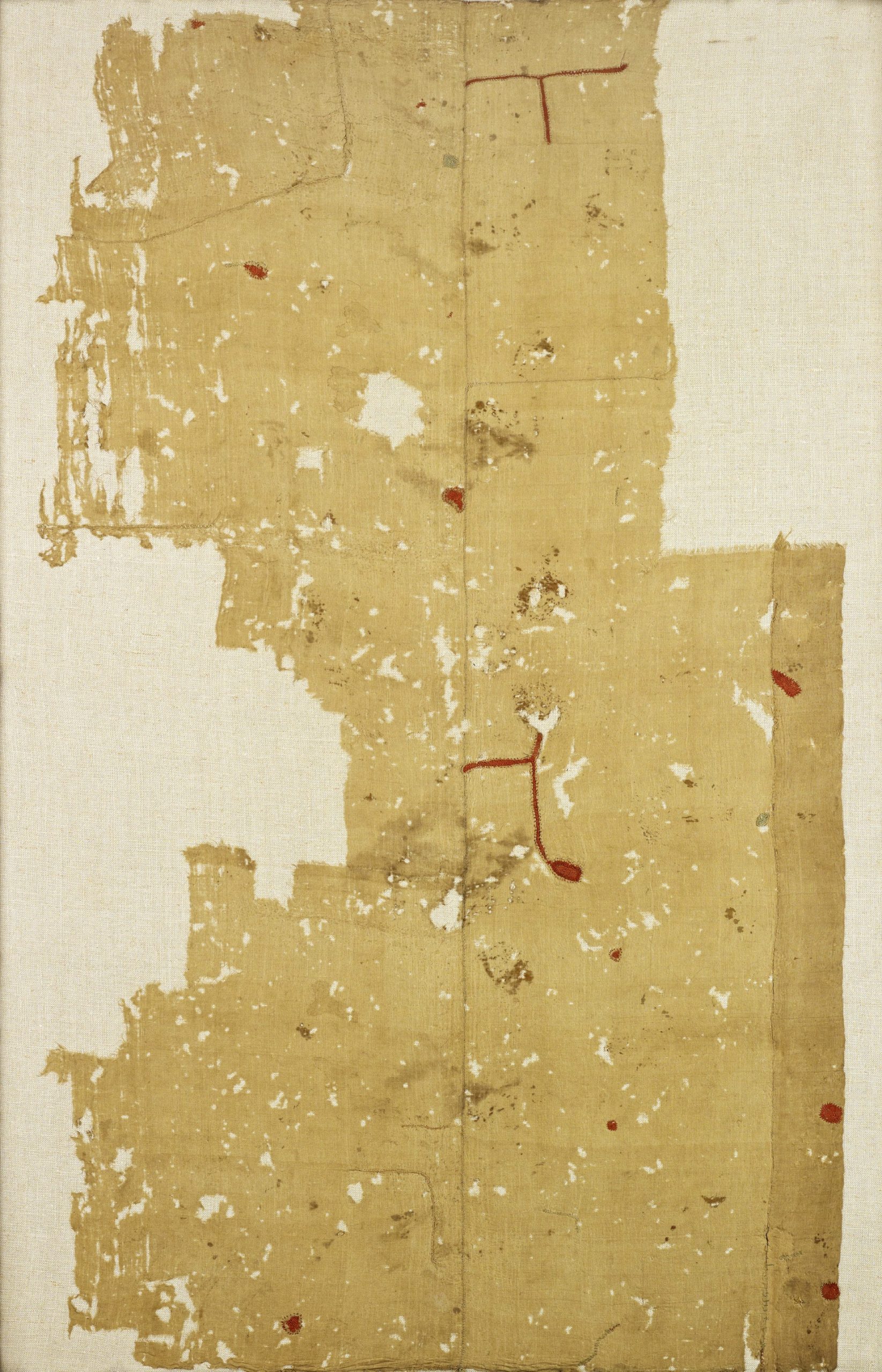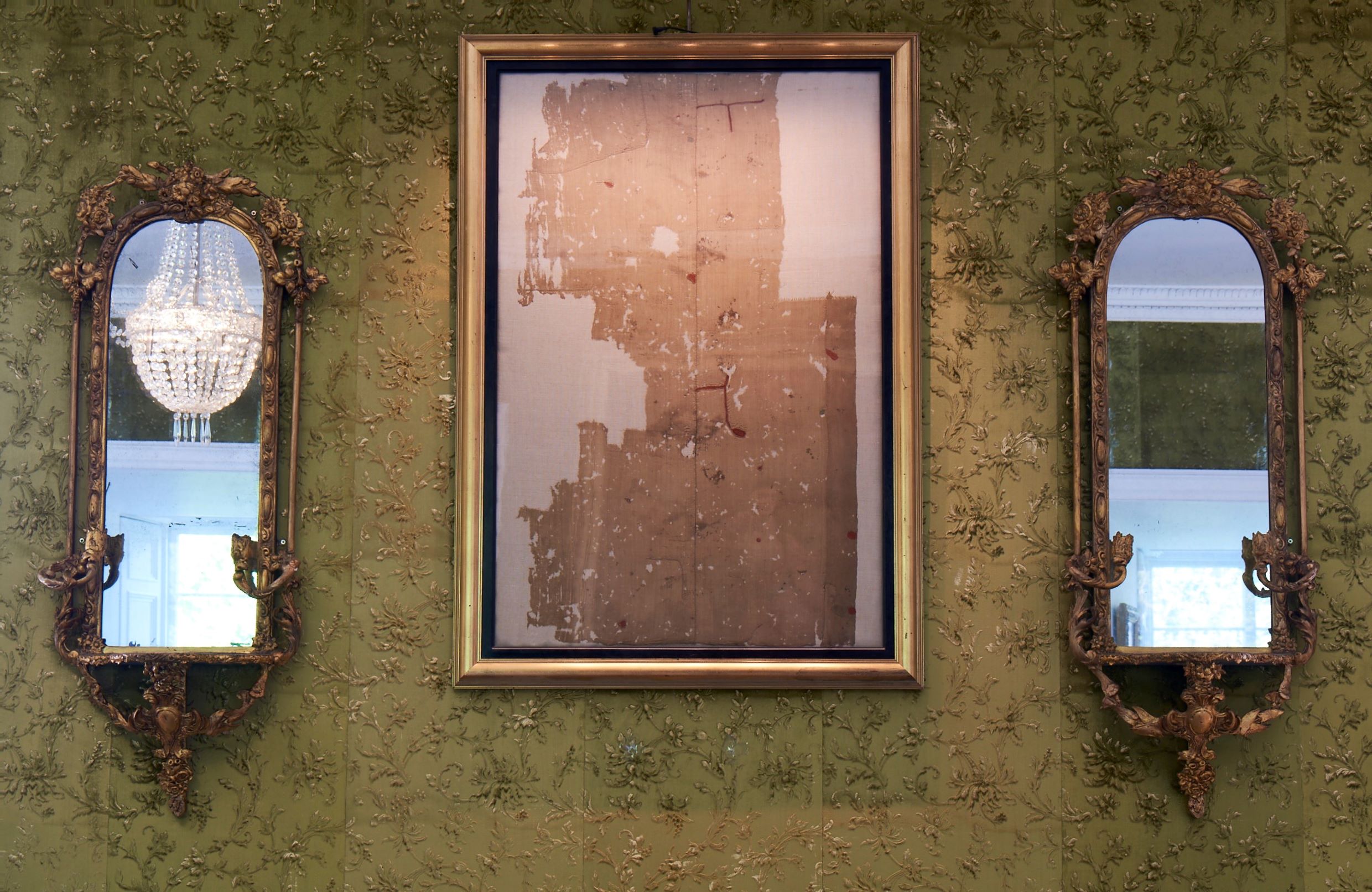Am Bratach Sith (The Fairy Flag of Dunvegan) is one of the clan MacLeod’s most treasured possessions. Probably from Syria or Rhodes and woven of silk in the 4th century AD, legend has it that this sacred clan banner has miraculous powers. When unfurled in battle, the clan would invariably snatch victory from the jaws of defeat.
The traditional tales about its origin can be split into two distinct themes – Fairies and Crusaders. Fairy stories are difficult to relate to fact and often come about as a substitute for forgotten truth. The connection with the Crusades can be linked to the only scientific information we have about the Fairy Flag’s origin. When Sir Reginald MacLeod of MacLeod (27th Chief) had the Fairy Flag conserved and mounted in its sealed frame by the Victoria & Albert Museum in London, he listened while Mr Wace (one of the V&A’s experts) set out his theory about its origins, including the historical evidence that the Norseman Harald Hardrada (one of the early ancestors of the Chiefs of MacLeod), while on an expedition to plunder the pilgrim routes of the Middle East, had brought a famous banner back to Britain where he was killed in 1066. Reginald listened politely and said: “Mr Wace, you may believe that, but I know that it was given to my ancestor by the fairies”, to which Mr Wace replied “Sir Reginald, I bow to your superior knowledge”.
The Crusader version
A MacLeod on a crusade to the Holy Land received food and shelter from a hermit in a mountain pass. The hermit warned him that an evil spirit, a destroyer of true believers, guarded the pass and that he needed a piece of the True Cross to proceed. However, the MacLeod slew the spirit, the Daughter of Thunder (“Nein na Pheupere”). Before she died, she revealed to him the future of his clan, directing him to take her girdle and make a banner of it and to make a staff of her spear.
The Fairy Tower version
One night when there was a feast being held at Dunvegan, a nurse put the Chief’s son in his cradle in the Fairy Tower and joined the party in the Keep. The baby became restless and kicked off his blanket, whereupon a Fairy came to comfort him, wrapping him in a silken shawl. When the nurse collected the child and brought it down in his fairy robe, the room became filled with the sound of unseen singers singing the Fairy Lullaby.
The Fairy Bridge version
Once upon a time, a fairy married a MacLeod Chief. They lived together for one year and a day after which the fairy had to fairyland. They parted company at Fairy Bridge near Dunvegan. As a farewell present, she gave him the banner telling him that whenever he was hard-pressed in battle, waving it would bring victory whatever the odds. She warned him, however, that it would produce this magic three times only.
During two major clan battles which were documented at the time, the Chief waved the Fairy Flag which helped secure victory. Belief in the mystical power of ‘Am Bratach Sith’ remains strong to this day. In 1939, a fire in the South Wing threatened to destroy Dunvegan Castle; when the Fairy Flag was carried to safety the wind dropped and the flames were seen to abate. During the Second World War, pilots from the clan carried its picture as a talisman. Dame Flora reportedly offered to wave the flag on the white cliffs of Dover to harness its magical power to repel the German invasion. Whatever the truth, the Chief and the clan have a profound respect for the Fairy Flag and its mystical power.




